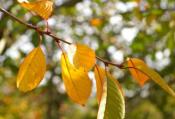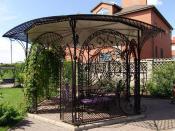Search
Login
The lawn in the infield, do it yourself step by step, how to properly care for the lawn
The onset of spring is a period when thoughts of the need for change begin to visit us more often. And the craving for change is observed not only in life, but also in all everyday moments. One of such moments is the decorative design of a personal plot. At the moment, the world of landscape design offers us a large number of styles for decorating home gardens, but the lawn is the invariable attribute of any of them. This phenomenon arose due to the fact that the lawn is a kind of background component of any design solution, and any landscape without it will be accompanied by a note of incompleteness.
Given the foregoing, this article, which is a guide to the fascinating world of landscape design, should in addition become a kind of step-by-step guide to the successful arrangement of your personal plot, both for amateurs and professionals in this field.
Content
Lawn features
The functions of the lawn in landscape design are extremely diverse.
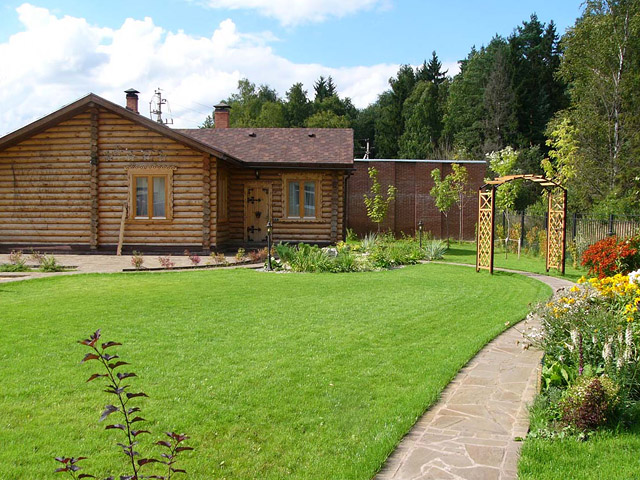
As mentioned above, the lawn is the background component of any decorative finish. A plot of land covered with a bright emerald living carpet helps to clearly distinguish horizons and play in contrasts.
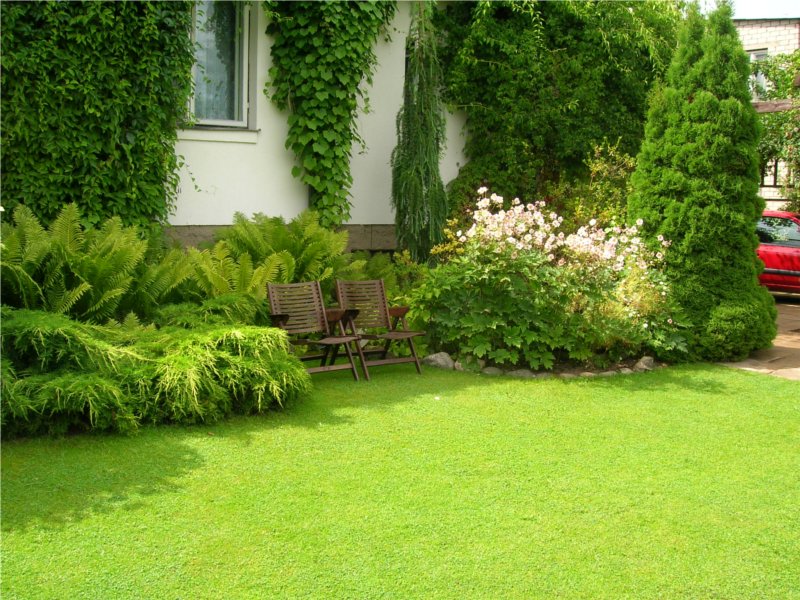
And from the point of view of designers, the lawn helps to place accents on the site and focus on solo objects. Such objects can be exotic decorative plants or bright flower beds, which against the background of the lawn unconditionally come to the fore.

How to make a lawn with your own hands
If you are reading this article, you probably wondered more than once: How to make a lawn with your own hands? It would seem that there is nothing easier than organizing a lawn in a personal plot, you can buy lawn roll, but you can try to sow and wait ...
But, as practice shows, it is not as simple as it seems. The lawn device includes a number of stages, through which you will become the owner of a personal garden decorated in accordance with all the rules.

selection and processing of the territory as a preparatory stage
The first stage is preparatory. Before sowing a lawn, you must carefully select the territory for it, and make its processing.

Processing includes clearing the site of debris, uprooting stumps and various rhizomes, as well as harvesting weeds that have spoiled your life for many years.
It's time to part with them! And planting a lawn will be the best reason for this.
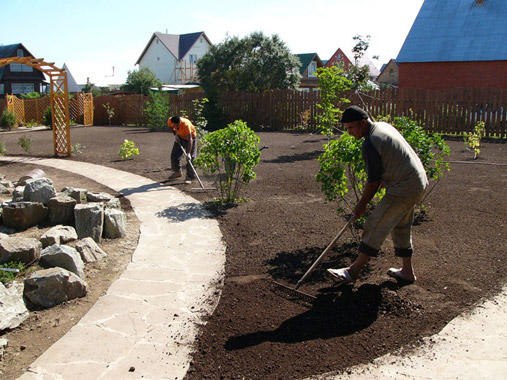
Another important component of the preparation is the leveling of the seed surface and the installation of borders. It should be emphasized that it is preferable to choose the area for sowing with a slight slope, which helps to improve the drainage function when watering the lawn.

lawn as a link in design
Professionals recommend choosing a site well in advance, since a month before direct sowing, the land must be carefully dug up and all the necessary organomineral fertilizers applied.
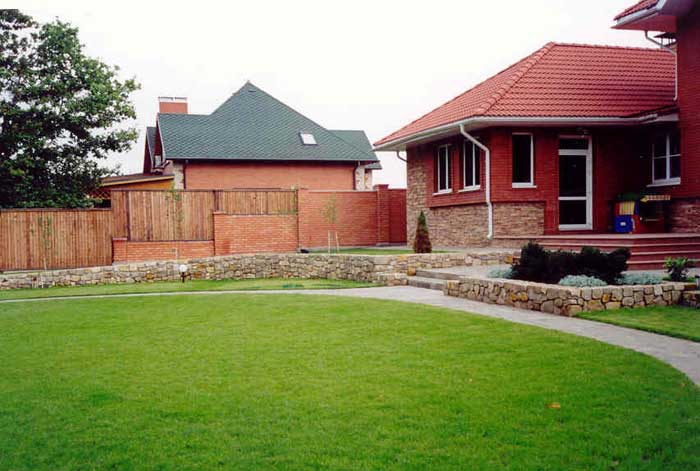
Regarding the choice of territory, it is worth mentioning that it is made in the immediate vicinity of the apartment building, as well as under the trees and between them.
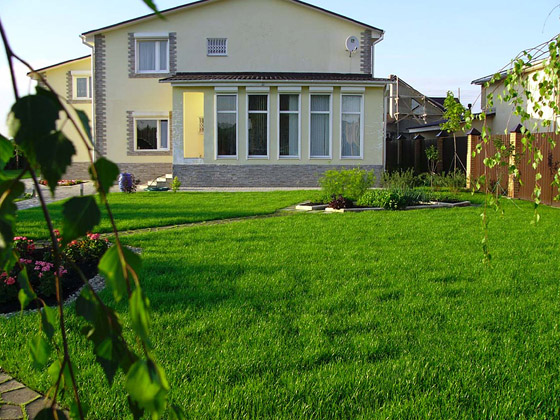
All this will contribute to the creation of the landscape of your site as a whole and will exclude inappropriate contrasting of its elements, since the lawn in this tandem will become a connecting link.
the path to success is a dense sowing bed
The next step in organizing the lawn will be the creation of a dense sowing bed. To do this, you need to figure out what type of soil is on your site.

If it is heavy clay, sand is required. And if it is excessively light, you can add a small amount of clay or peat. Soil compaction is done before planting the lawn.
seed selection
Having created the sowing bed, you can begin to think about choosing grass for the lawn. It depends on the purpose of the lawn and the illumination of your site.
To decorate a garden plot, as a rule, create a landscape gardening or ordinary types of lawns, the seed for which is a mixture of herbs.

Mixes for shaded areas can be represented by meadow bluegrass, meadow fescue and white woodland, taken in approximately equal proportions, as well as pasture ryegrass, red fescue, meadow bluegrass, and for lawns located on the illuminated side, a composition consisting of shoot moth and comb ordinary, taken at the rate of two to one.

seeding time - August
Seeds are selected and this means that it is time to do their seeding. A calm August day will do just fine for this.
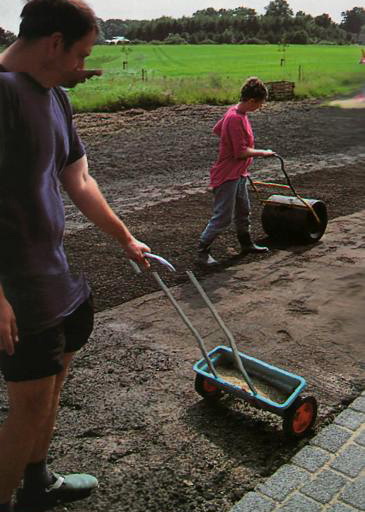
Frost is still far away, and this will enable seeds to take root in the soil, and the absence of wind is necessary, since the seeds are sown manually, after which they are sprinkled with a 1-2-centimeter layer of soil. That's all, now you can wait for seedlings. But here there are pitfalls.
Seed germination is a long-term process and can take a month. During this period, you need to carefully care for your future lawn.
It consists in watering crops in a dry time. This should be done with due care, so as not to accidentally rinse off seeds that have not yet taken root.

do not forget about careful leaving
Lawn care involves mowing the lawn, which should be done as needed. Basically, the height of the grass stand is within 10-15 cm, an occasion for the next lawn mowing.
A prerequisite for cutting is the presence of a lawn mower.
After mowing, the lawn is watered, and the mowed grass stand is used as fertilizer. The last mowing is done in early September.
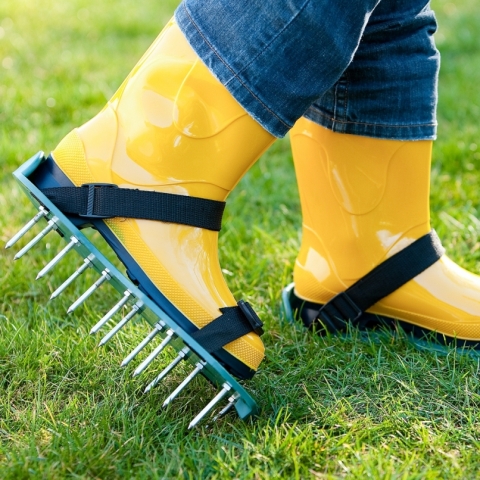
Spring is the ideal time for loosening the lawn. This requires only a rake and extreme caution.
And after this procedure, it will not hurt to introduce organic fertilizers. Superphosphate or potassium chloride is suitable for these purposes, and in the summer, urea is an ideal fertilizer for the lawn.

Stop the weed
We should also talk about weeds. Weeds on the lawn are unacceptable. In this regard, you must carefully monitor your lawn and get rid of them.

Annual weeds are destroyed by mowing the lawn, and perennials that give roots on the site must be dug up manually.

Lawn and ecology
In conclusion, you can not say about the impact of the lawn on the ecology of your site. A well-kept lawn not only contributes to the decoration of the area, but also improves the ecological situation.

Young lawn vegetation helps to improve air quality, and also reduces the overall temperature in the area by an average of 2-3 degrees, this is due to significant evaporation of moisture. And the lawn itself is much less prone to overheating than sand or soil in the corresponding area.


